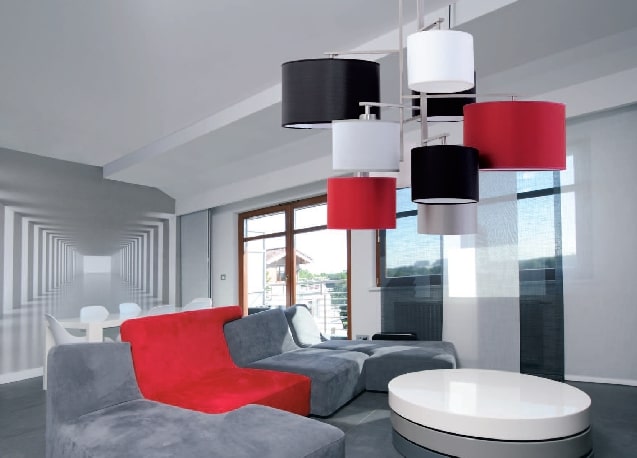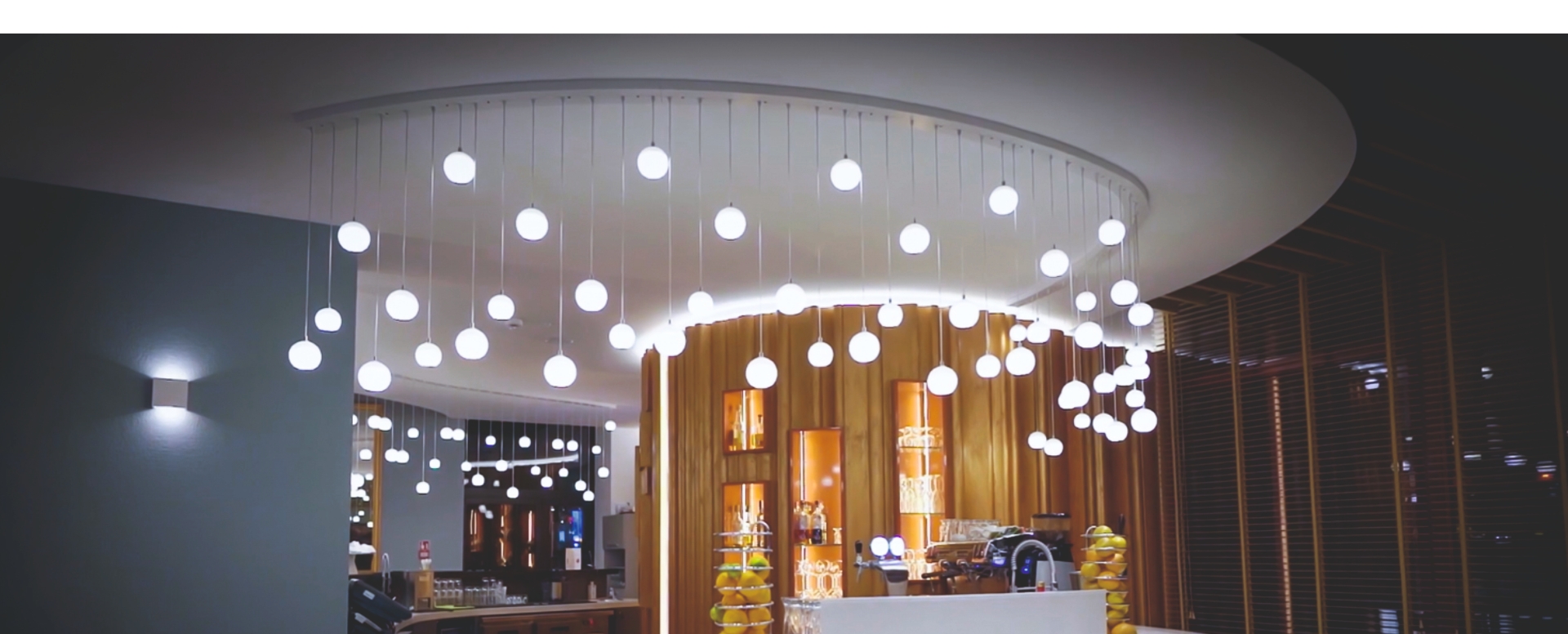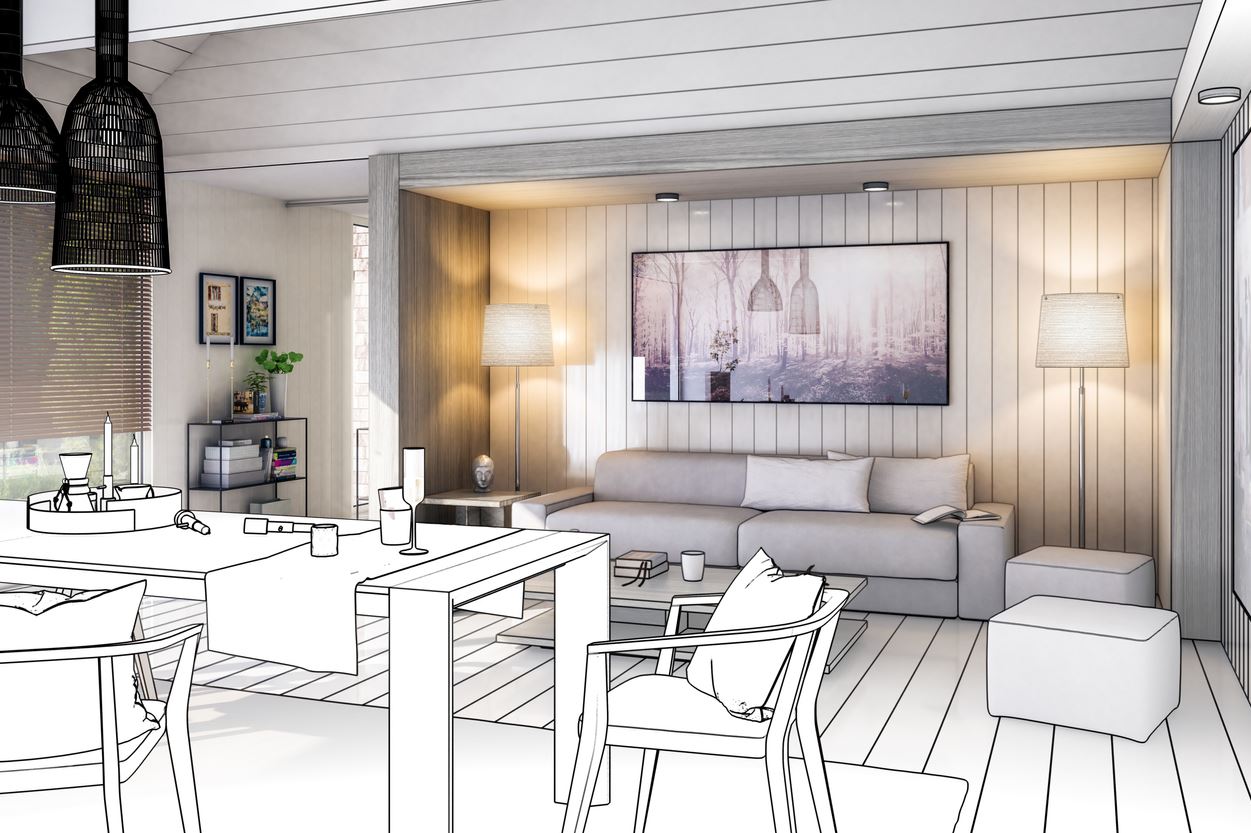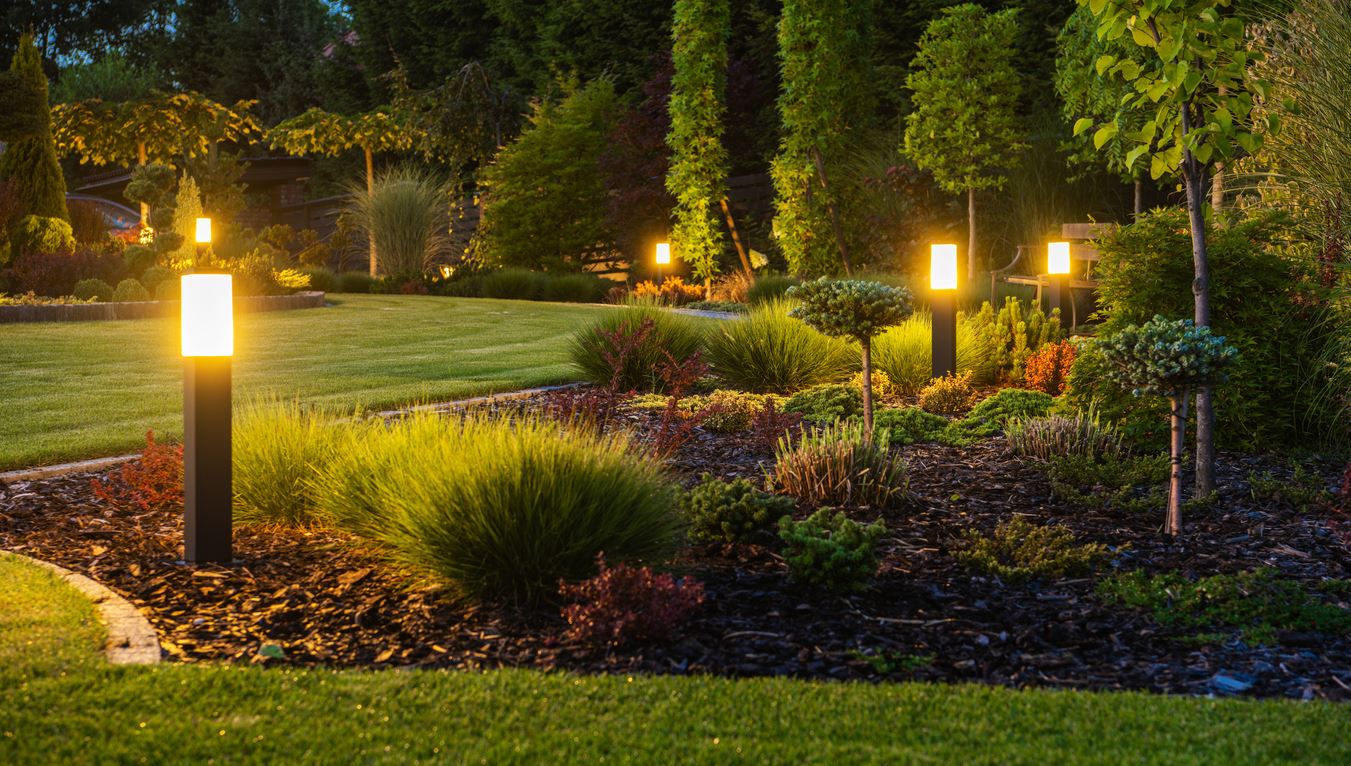The living room is usually the central and most important place in the entire home. We want it to be presentable and comfortable at the same time. Living room lighting is as important a design element as its furnishings, because it creates the right mood and emphasizes the advantages of this room. If you do not know how to illuminate the living room, read our guide.
Lighting in the living room – how to plan it?
It is ideal if we are able to design the electrical installation at the stage of building a house and finishing or thoroughly renovating the apartment. Drawing out the functional layout of the living room and dividing it into zones will make it easier for us to arrange the points of light.

· One light source is a relic. Designers emphasize that the immortal chandelier or ceiling lamp as the only and main lighting in the living room is a relic of the past. Appropriate arrangement of several different points of light in the living room will create a unique atmosphere and facilitate the functioning of the household members.
· Zones in the living room. Let’s consider where we will place the sofa, where we will create a TV corner, whether there will be a table, library or desk in the living room. There should be at least as many points of light in the living room as there are zones. It is worth considering installing independent circuits. This solution will allow us to save energy, because we will not use lighting in all zones at the same time. Let’s consider what lighting for the living room will be useful when we rest, watch TV and read.
· The light color in the living room. In practice, too weak or poorly selected lighting of the living room will affect our mood. Inadequate lighting of the most important points is a subtle stimulus that can lead to fatigue and deteriorate well-being. When choosing light bulbs, it is worth paying attention to their color temperature expressed in Kelvin. The color temperature below 3300 K is called “Warm white”, which is conducive to relaxation and tranquility. On the other hand, approx. 4,000 K is good for work as it facilitates concentration. The cooler color of light should be used above the dining table, and the warmer one in the rest area.
· Wall lighting. Lighting in the living room is not only a utility. Thanks to the mute, we can also play with the space, emphasize decors or pictures. Spotlights or LED strips will allow us to display a photo gallery, shelves with decorations or a home library
The best lamps for the living room – how to choose them?
Since we already know that the optimal and the most aesthetic solution is to divide the room into zones, it will be easier for us to choose the best lamps for the living room.
1. Ceiling lamps
It is difficult to illuminate the entire room with one lamp, even if it is small. Therefore, an increasingly popular solution is to install several ceiling lamps, for example one or two above the table and one above the seating corner. If we want one main lamp in the living room, e.g. for decorative reasons, let’s supplement this type of living room lighting with a few additional points.
2. Chandeliers
Especially decorative chandeliers will suit high living rooms decorated in a classic or glamorous style. Even in this case, it is better not to choose a chandelier as the only source of light in the living room, but to choose additional lighting in a similar style.
3. Floor lamps
They are the perfect complement to ceiling lighting and are best suited for a rest area. The choice of floor lamps for the living room is huge – from classic ones with a lampshade, to lamps on extension arms, in a loft style. It is worth remembering that floor lamps with a shade that illuminates the ceiling give more light. Lamps with rotating spotlights and a dimmer, thanks to which we can regulate the light intensity, work well in relaxation areas.
4. Wall lamps in the living room
They also work well in a seating corner as a discreet lighting in the living room and in all points where they have a decorative function: on the wall with photos, as lighting for paintings, above the chest of drawers.
How to illuminate a living room with a dining room?
One main point of light is not a good solution if we have a combined living and dining room. Lighting in such a room should include at least two main points of light, i.e. the ceiling lamp and the table lamp. It is better not to illuminate the dining area with only wall lamps or even a floor lamp on an extension arm. This does not provide equal lighting to all zones, and in practice it will be irritating.
If our table is round or square, one table lamp is enough. However, if in the dining area we decide to have a long table or one that we fold out often, let’s think about two table lamps next to each other or an oblong chandelier with several light bulbs. The optimal solution for tables up to 120 cm wide is to hang the lamp approx. 50 cm above the table top. If the table is wider, the distance should be approx. 80 cm. The most common form of lighting for a living room with a dining room is the choice of lamps with shades directing the light downwards and with an adjustable cable length.
A suitable light source above the table will be an incandescent lamp with a power of 20-25W. In the case of two table lamps, let’s opt for 16W bulbs, and if the table is also to be used for creative work, it is better to choose a 40W bulb.
In the dining area, we should install a separate light point or even several. It does not have to be as intense as a table lamp anymore. Consider a floor lamp, a lamp on a pole, or a lamp with a lampshade illuminating the ceiling. Let’s consider if we need a separate reading lamp in the living room. Its function can be a floor lamp placed next to a sofa or armchair, or a smaller lamp on a dresser or cupboard.
How to illuminate a living room with LEDs?
LED lighting in the living room is an energy-saving, aesthetic and practical solution. LEDs at home mean that you can save energy up to 80 percent. compared to traditional light sources. This type of living room lighting also generates less unwanted heat. Usually, they are best suited for rooms and points that require frequent switching of light on and off, e.g. in a hall or bathroom. However, LED lighting in the living room is an increasingly popular arrangement trend. You can use it to illuminate paintings, curtain rods, works of art, but also individual zones. Thanks to aluminum profiles and LED strips, we will create unique arrangements.
One of the advantages of this type of lighting is the fact that even an amateur can handle its installation. Here are some ideas on how to illuminate the living room with LEDs:
· Suspended ceiling. It allows the light to be evenly distributed throughout the room. We mount the LED strip on a drywall. It is best to choose a tape with a power of 8.4W, and thanks to the controller mounted in the wall, we will reduce the light intensity.
· Cornices and wall edges. We mount the cornices approx. 10 cm below the ceiling and stick the LED strip to them facing the ceiling.
Lighting of the curtain rail. It creates a beautiful decorative effect. Mask the curtain rod with a special strip, and then install an LED strip between it and the wall.
· LED TV lighting. It looks very effective, but it is not only decorative. It is also a way to relieve your eyesight and improve the quality of watching TV. The LED strip mounted behind the TV allows you to reduce the contrast, so that our eyes do not get tired so much.
Shelves led lighting. It will work as an addition to other living room lighting points and is mainly decorative, creating a unique effect. We can use LED strips to illuminate shelves with photos or a home library.
Track lamps. An extremely effective, but also functional solution that will work especially in modern, loft interiors. LED bulbs are attached to the rail mounted on the ceiling, and they can be moved and their lighting angle changed. This rail with several LED bulbs can also be mounted above the dining table.
LED plafonds. We can install them flush-mounted and surface-mounted, which gives various possibilities of arranging with light without the need to install a suspended ceiling. They will work well in low rooms and attics.
Spot lighting for the living room – how to choose and plan?
Spot lighting in the living room is a solution that works just as well as in the bathroom or hall. The variety of spotlights gives a lot of room for maneuver in interior design. The spots can be installed in drywall. Installed in this way, they do not have to be a kind of additional lighting for the living room, but they successfully constitute the main point of light and give interesting visual effects. Among the types of spot lighting, we distinguish mainly halogen and spots. LED spot lamps are a very good idea for the living room, they have a long service life and allow you to save energy.
Spot lighting, unlike decorative, is primarily intended to illuminate a specific area of use. So if you are wondering how to illuminate the living room with spots, it is best to choose them in the dining area. Thanks to this, we will get even and bright light exactly in the place where it is needed. This solution will work, especially if we use the table not only for eating, but also for work.
Remember that with spot lighting, we will also highlight details and specific elements of our living room equipment, such as particularly eye-catching furniture. We can mount them, for example, on the ceiling along a decorative wall (e.g. made of bricks) or in places where we have hung pictures or graphics.



